Is it possible for one shape of clothing to serve all ages (except children), figures, and personal tastes and make everyone look good in it? Also, the clothing covers every occasion, from loungewear to formal (except doing sports). On top of that, it’s eco-friendly.
If “Oh, that cannot be done LOL” was your answer, you would be very surprised by this article.
This is the second article of the “Old is New” series. In the previous article, we reviewed the scientific evidence of traditional material, Urushi. In this article, as promised, I will discuss traditional fashion that is logical, efficient, sustainable, and fashionable.
By examining the Kimono’s structure and sewing techniques closely, let’s consider the product/fashion design of tomorrow.
I’m Satoko, the founder and a Bespoke Artisanal Experience Coordinator at “KoLe SHIKOKU, Japan.” As a bridge between your everyday life and the heritage crafts of Shikoku, Japan, I regularly wear Kimonos as my business attire. This article comes from my own experience of wearing them and learning about them.
What is Kimono?—prepping you for the article
Before I discuss the sustainability of Kimonos, let’s review what kimonos are so that everyone is on the same page. If you know it well and the terms “Nagaki” and “Wasou,” please skip this part to save your time.
It used to be everyday clothing in Japan: Kimonos are traditional Japanese clothing. They are not just for special occasions; they were regular clothing in Japan up until less than 100 years ago. “Less than 100 years ago” is a blurred expression, but it differs depending on places, lifestyles, and preferences. At least in my grandparents’ generation, many people wore kimonos daily.
2 types of Kimono: When you say “Kimono,” it might refer to both of the following clothing in the photo. In Japan, when we say “Kimono,” it refers to left. The right is called “Yukata.”

The difference can be explained in many ways, but let’s keep it simple in this article.
The one worn without underlayer and made with cotton, linen, or polyester is a Yukata. The one worn with an underlayer is a Kimono. Depending on the color and pattern, Yukata can be worn in a Kimono style—with an underlayer. Yukata is the most casual traditional clothing style worn in public. It’s usually worn in Summer.
You could almost say that whether it is a Kimono or Youkata, it’s a matter of how you wear it because Yukatas and cotton kimonos are made the same way.
Then you would think,
“Keep saying ‘Yukata and Kimono’ every single time is a bit too much. Isn’t there any term pointing to both Yukata and Kimono?”
It does. It’s not a familiar term for Japanese people who don’t wear Kimono and Yukata regularly, but it’s called “Nagaki.”
This article is about the “Nagaki.”
The term for both styles of Kimono and Yukata is “Wasou (和装),” which means wearing traditional Japanese clothing.
Clothe itself: Nagaki
The Style: Wasou
Items to do Wasou: There is much more to it if you really want to wear them, but here are the major exposed items.
長襦袢 /naga-juban/: Think of it as a dress shirt or blouse when you are putting on a suit or sweater.
長着 /nagaki/: When you are wearing a nagaki as a Kimono, it’s a suit jacket or sweater.
帯/obi/: It’s a belt. Approximately 4m long or longer.
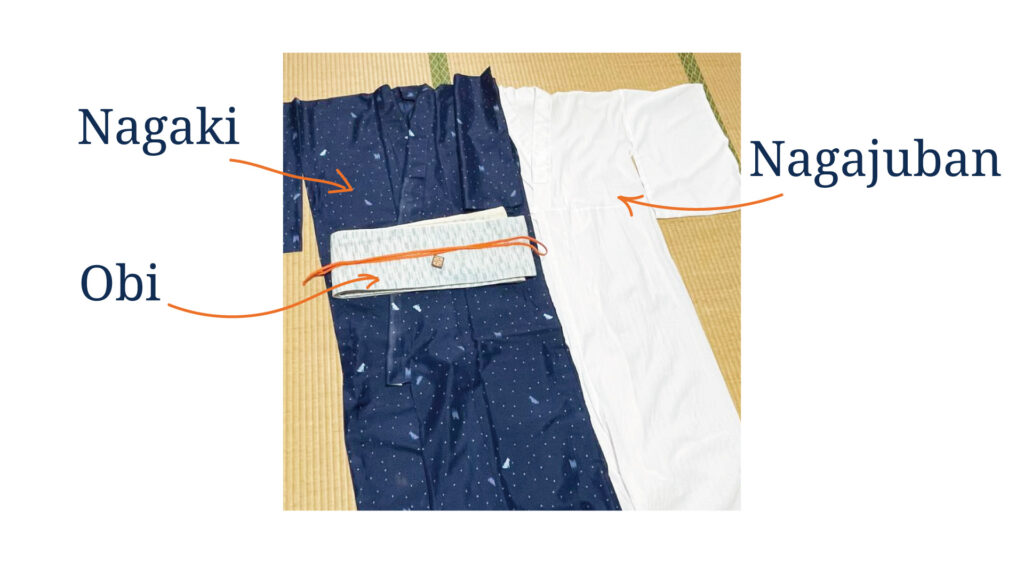
The biggest difference between traditional Japanese clothing and Western clothing is that we never wear Naga-juban (dress shirts or blouses) alone. When we wear just one thing alone, then it is Nagaki—Yukata style.
Other items: these are the items unique to female fashion.
Everything Goes Flat: I find that the most significant characteristic of Wasou is that when you fold them, they go flat (watch the video). This is because of one of the secrets I will tell you later.
What’s Nagaki?
What’s Wasou?
If you could answer it straight away, let’s move on to the next.
Nagaki’s Sustainable and Fashionable Superpowers
Retailorble—size free module: small to big & big to small
Nagaki becomes flat when you fold it. This is because the cloth is cut and sewn flat, whereas the clothes we wear today are cut and sewn to be three-dimensional to fit the human figure. Also, for Nagaki, traditionally, the width of the cloth is not trimmed to the size that once you remove all the thread, each piece goes back to flat pieces. If you lay down all the pieces like a puzzle, it becomes a roll of cloth.
Here is a video of when I removed the thread of an old winter Nagaki to remake it into other items of Wasou.
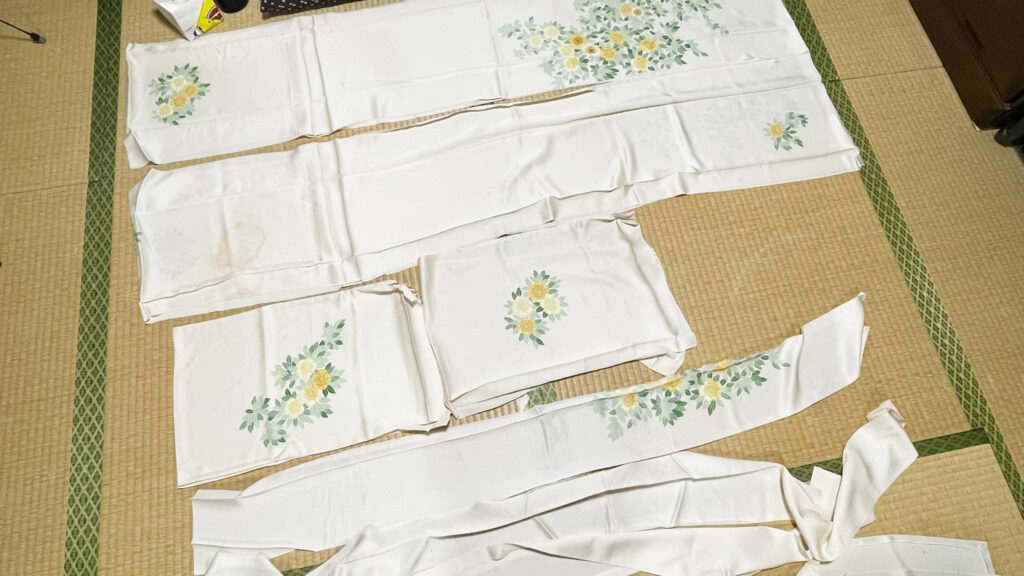
This format makes it possible to resize and resew them into a nagaki again!
Also, using the same-size cloth rolls for both Nagaki makes it easier.
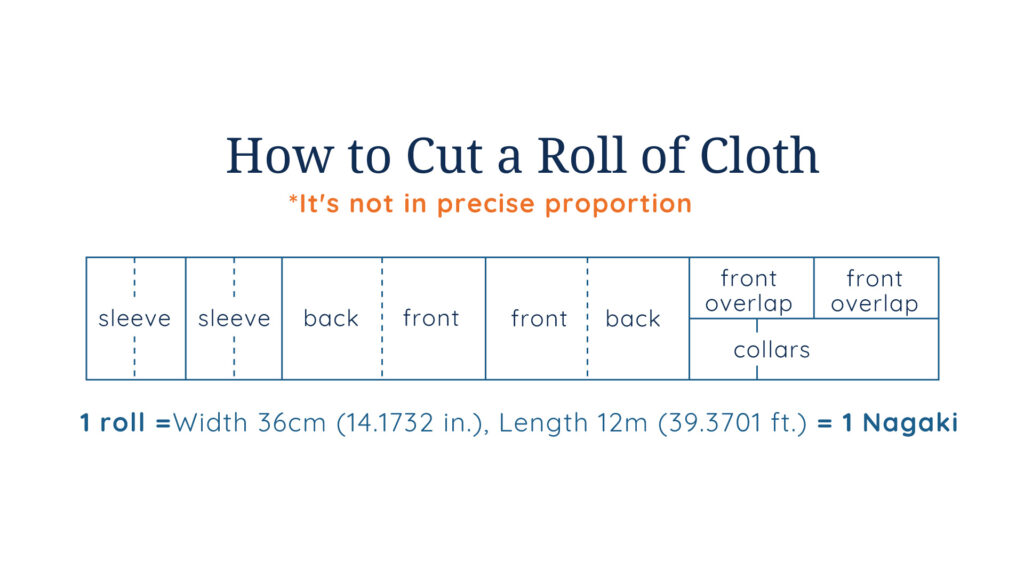
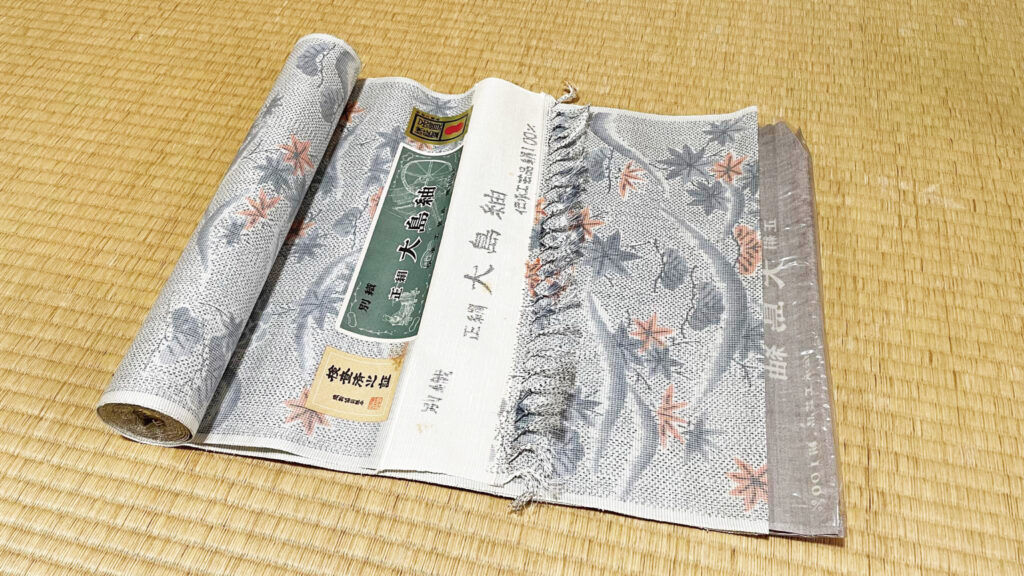
Whatever the size you are, the shapes of each part are the same.
If your size is smaller than what one roll of the cloth can make, which many of us are, you fold and sew the excess length or width in. Keeping the width of the cloth is the key. It makes resizing possible. *This is a basic idea; it could differ depending on the situation.
This way, you can wear the same Nagaki whether you gain or lose weight. You can wear it as long as you are happy with it.
The Entire Life Circle of Nagaki
Now you know that Wasou’s size-free module gives Nagaki and Nagajuban a long life. But that is not the only reason why Wasou (Japanese Traditional Clothing) is super sustainable.
Cotton Nagaki is worn for a wide range of occasions, from loungewear to business casual throughout the year. Let’s look at Nagaki’s life cycle.
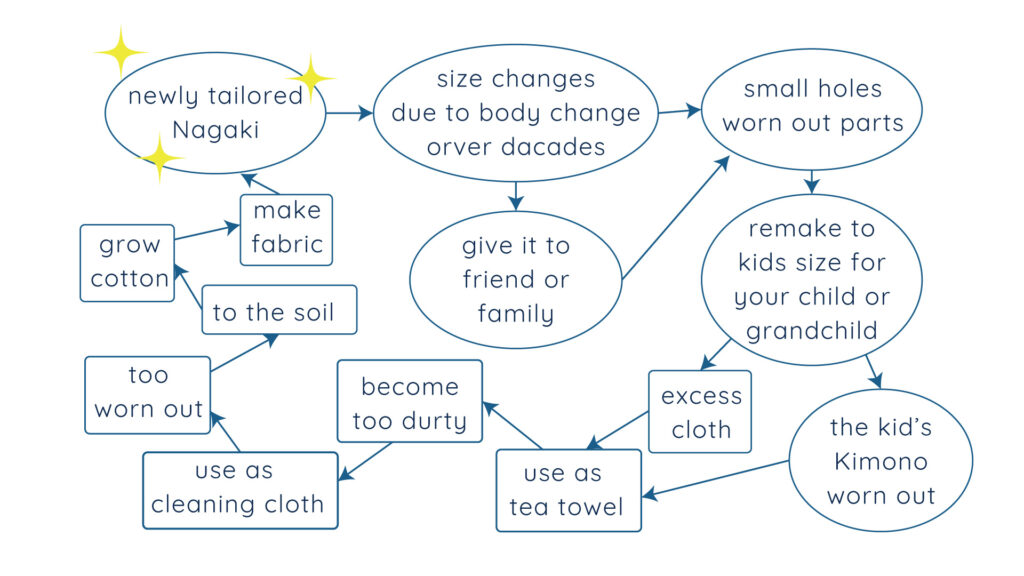
The last part of returning it to the soil is a bit extreme for an ordinary Kimono wearer like me, but you get the idea. Also, there is a Used Kimono Shop that is trying to practice it in Kyoto. If you are interested, give me a shout, and I’ll let you know about them. The Nagaki, which I took the sewing thread off in the video earlier, is the one I bought at the shop.
Regardless of the material, as long as it’s a natural material and if it was worn and cared for properly, Nagaki’s life as clothing is very long: easily a few decades and even a century. I wear my late aunt’s Nagakis, which are probably older than me. A friend of mine wears my mother’s Nagaki without altering it because they are the same size. The Nagaki was made before my mother married. (By the way, I’m 43 years old now [2024].)
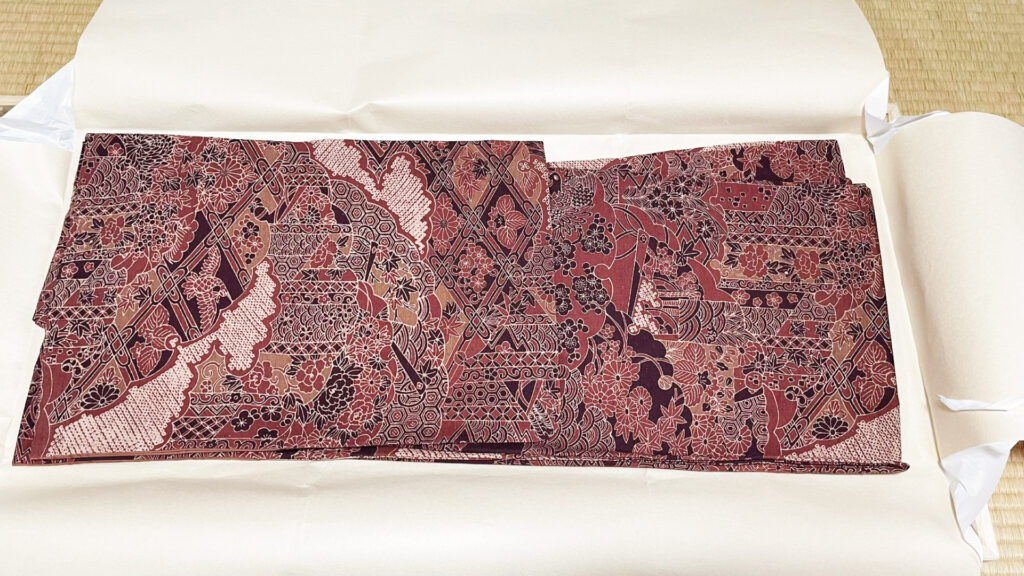
The secret to the Nagaki’s longevity is hidden within its stitches.
The Technique to Make Nagaki’s Longevity Possible
You won’t see much thread on the surface of hand-sewn Nagakis. The way the thread is exposed to the cloth front makes sewing much easier. Then why are Nagakis made with extra processes to hide the thread? Is it because of Japanese aesthetics? In a way, it is one of the Japanese aesthetics, but it has a more practical reason: to prevent the thread from being worn out.

Hand sewing is very important for Nagaki’s longevity. The craftspeople who are specialized in sewing Nagaki are called “Wasai-shi (和裁士).” Some of them sew one Nagaki in one day. They stitch cloth, considering the possibility that the nagaki might be altered someday. When you take all the thread out, the needle holes become invisible after washing the cloth before resizing, whereas machine-sewn Nagakis’ needle holes tend to remain visible.
Also, taking out threads is much easier with hand-sewn ones.
Please do not get me wrong; I am NOT against machine-sewn Nagakis. Machine-sewn Nagakis are inexpensive compared to hand-sewn Nagakis, which Wasou makes more accessible. If you don’t intend to alter the Nagaki, machine-sewn is one option. If you love the fabric and see yourself wearing it for decades or passing it on to your child or a younger member of your family, hand-sewn can be an option to consider.
Same Shape Clothe for Every Body Type—everyone can shine.
Wasou is an interesting fashion. It doesn’t require a desirable body shape to look good in it. I noticed this once I started doing Wasou regularly.
An 80-year-old lady in a Kimono can easily look sexier and cooler than a 35-year-old. One design of Kimono that looks nice on the in-40s people does not necessarily work for people in their 20s. The pattern that works for slim people might not work for volumier people, but the patterns that look great on volumier people won’t work for slimmer people.
This might sound similar to the clothes we wear every day, but the biggest difference is the shape of the clothing, and the items are all the same. In Wasou, it is not about body type or age. Whether you look good in a Kimono or not is up to how you coordinate the items, such as materials, colors, and patterns, as well as how neatly you wear it. An inch of difference in the position of each item makes a huge difference in the atmosphere you wear.
My Personal Wild Guess Observation as a Kimono Wearer
In this article, I am NOT suggesting everyone should wear kimonos. I am introducing an example of sustainable product design and manufacturing from traditional fashion. The more I wore kimonos and knew about them, the more I started to see the practicality of Wasou.
I heard that a long time ago, everyone sewed Nagaki and Nagajuban at home. When they washed Nagakis, they took the thread and washed Nagakis, then sewed them back or resized them again.
Here is my wild guess: Back then, a roll of cloth was not cheap. Except for wealthy people, people had to make the most of it. Also, it had to be simple enough for many people to be able to sew Nagaki and Nagajuban—how to divide a roll of cloth and how to sew. I assume that the Kimono module was developed over the centuries out of necessity.
Although the intention of people back then to develop the Kimono module wasn’t to protect our environment, I think we have a lot to learn from it.
Future Product/Fashion Design & The Power of Consumers
Through this article, I hope to showcase the ingenious, eco-friendly product design side of traditional Japanese clothing beyond its appearance. It has a long product life, is mendable and resizable, comes in one shape but serves everyone’s taste, and can be returned to soil at the very end.
Humankind has developed or invented new things to provide a more convenient and better life for ourselves for the entire history of our species. We had never considered how to dispose of the new inventions when we made them. Considering how to dispose of new things always has come later. Today, we are living in an era when we need to consider the impact on the environment as well as our safety, comfort, and convenience. Probably, it must come first today to consider how to dispose of new products when we create them.
People in the industry who create new products have the power to change. How would you change your products into Nagaki-like products? If you are a fashion designer, how would you integrate a Kimono Module into your design?
This is also the next challenge for KoLe SHIKOKU Japan and our collaborating artisans. Many traditional craft industries are now at a crossroads, facing the difficult choice of how to preserve their traditional techniques. One choice is to create new products that match the modern lifestyle. Our collaborating artisans are taking that road. Sometimes, we have to let go of the repairability of new traditional craftsmanship-inspired items. However, once we figure out ways to preserve their traditional techniques with new items, we must consider new product designs that are repairable.
Producers have the power to change what they put on the market, but consumers—that means every one of us—have the biggest power in all matters. Whatever the producers try to sell, if consumers reject these products, producers cannot keep putting them on the market. Do you have any standards for decision-making when you buy new things regarding eco-friendliness?
Stop and Observe Before You Dismiss Old/Traditional Things.
Through two articles, this one and the previous one, I showcased two examples of traditional things that have great benefits or hints to the new era we are living in—considering and taking action towards a sustainable future.
The main intention of these two articles was to provoke an interest in reviewing something traditional in your culture and seek a way to repurpose it for your sustainable future. So, please stop before you dismiss something old or traditional in your culture. Once you dig a little bit further, you might find a great value to the future of your society or the world. If you find one, please tell me about it. I am more than curious to know about it!
Thank you for reading till the end.
In the next article, I will discuss how fragile keeping traditions are. Do you have a family recipe that has been passed on to generations? Let’s discuss it in the next article. See you then. To catch the next issue, please don’t forget to follow me wherever you get the link to this article— Instagram, Medium, or LinkedIn.

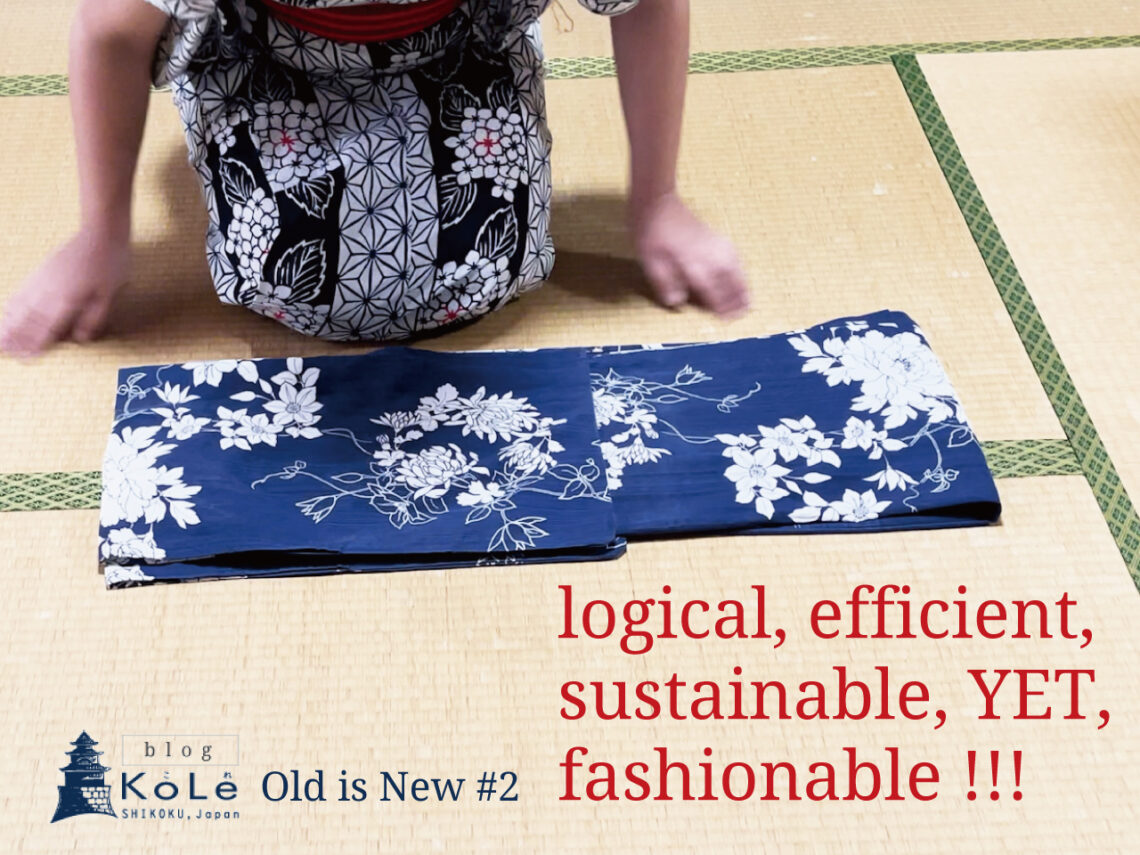





Comments by satoko